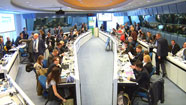On 5 April 2016 the JRC presented the interactive and collaborative online European Energy Efficiency Platform. This beta platform is conceived to fill the gap opened by scattered data and fragmented knowledge resulting from a rapidly growing energy efficiency market. It is expected to be both a one-stop shop for information retrieval and a meeting point for experts to exchange data and reduce redundant activities.
Renewable energy technologies/sources path within EU 2020 strategy
Renewable energy technologies/sources (hydropower, wind power, solar power, marine-energy, geothermal energy, heat pumps, biomass and biofuels) are alternatives to fossil fuels contributing to the improvement of environment, enhancement of energy security and diversification of energy supply. In line with Article 4 and Article 22 of the Directive 2009/28/EC Member States (MS) have submitted to the European Commission their national renewable energy action plans (NREAPs) and biennial progress reports. This report contains an analysis of these documents and a summary of data at the EU level, providing also a view of each MS situation, the progress of each technology/sources from the baseline year 2005 to 2012 and the pathways to 2020 in three main sectors: Electricity, Heating/Cooling and Transport. Biomass is and will remain the main renewable energy source in the European Union although in relative terms its contribution will decrease from 53.7% in 2012 to 45% in 2020 due to the fast penetration of new renewable technologies, especially wind, PV and heat pumps. Between 2005 and 2012 more than 50% of additional renewable electricity in the EU was provided by wind power. Solar photovoltaics increased by a factor of 46 during the same time span whereas heat pumps increased their absolute contribution in heating/cooling sector by a factor larger than 10. In 2020 wind power will overcome hydropower becoming the second renewable energy source in the EU accounting for more than 17% of final renewable energy expected.





To quote this publication use the follonwing format: